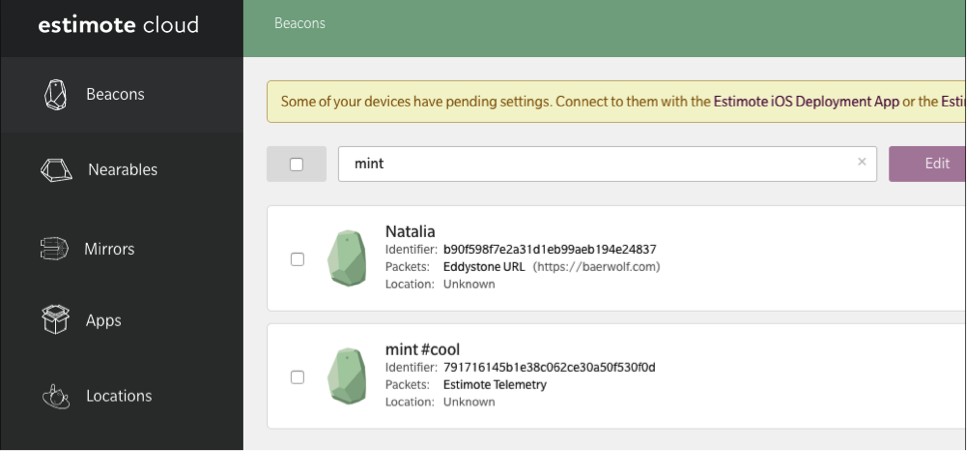![]()
Almost two decades ago, moviegoers were creeped out by an excessively cheery hologram greeting Tom Cruise as he entered a Gap store in a mall, desperately trying to be anonymous.
“Hello Mr. Yakamoto, welcome back to The Gap. How’d those assorted tank tops work out for you?”
The movie was Minority Report, and the fictional year was 2054.
In reality, it was only 11 years before Apple debuted iBeacon in 2013, a protocol that enables mobile devices to perform actions when in close proximity to an iBeacon. It’s not the optical recognition technology from the film, and thankfully includes a lot more privacy protections - but it offers an array of benefits to businesses and consumers.
Wait - is this a GOOD thing?
Among the endless possibilities, beacon technology can:
-
Provide an augmented reality experience as you tour a home, tailored to each room you are in with your smartphone. This means you will be able to evaluate properties without a Realtor by your side to point out every detail.
-
Help you discover whether your expensive Google Ads are really driving customers to your store.
-
Enable Google My Business to better represent your store’s busy and lax times to consumers.
-
Much like in the film, provide a personalized shopping experience, perhaps by offering a very limited time coupon while you are in a store, or suggest items compatible with those you have already purchased.
-
Unlock the door to your home without a key.
-
Enhance a myriad of industrial and healthcare applications.
But how does it work?
A beacon is a small device with a Bluetooth radio transmitter that repeatedly transmits a single signal that other devices can see - that’s it.
Inside a beacon, you’ll find a CPU, the Bluetooth radio, a Bluetooth Smart connectivity module, and batteries. They can be powered by tiny lithium chip batteries, or plugged into electrical service.
![]()
What does a beacon transmit?
The hardest thing for many users to grasp is how simple a Beacon really is - it’s not actually GATHERING any data about you, it’s literally like a lighthouse (hence the name “beacon”), just flashing its little ID signal over and over again, up to 10 times a second.
![]()
They can transmit over ranges as short as 4 inches, or some can range up to a half a mile - depending upon the device and its application.
When an app designed to pick up the beacon’s signal “hears” its broadcast, the app will then perform the actions triggered by that beacon ID.
![]()
In the case of the above-mentioned home tour, if the beacon ID tells the real estate app that you’re in the kitchen, you’ll then get the augmented reality experience for the kitchen - until you move to another room, away from the kitchen beacon, and the app “hears” a beacon with a stronger signal in the next room.

More ways to leverage beacon technology
Navigation. imagine being inside a large museum like the Louvre or a major airport - beacons can provide very detailed “you are here” information that helps you find your way around inside the building - kind of like having Google Maps for indoors.
Analytics. Want to know how many customers visited your store last month? Beacons can help with that.
Locate Co-workers. Are you looking for your VP of Sales? Beacons can tell you he was last pinged in Conference Room number 3.
Event Personalization. You can use beacon technology to create unique and engaging event experiences for your attendees. Deliver electronic tickets and venue tips as people arrive, and allow attendees to automatically check in.
Product information. Standing in a store, staring at that 70” television and wanting to know more? Beacons can send detailed information and product reviews right to your phone.
Real-time availability. Beacons can tell you if that conference room is likely to be empty right now.
Inventory Tracking. Keep track of specific items wherever they are located in a warehouse.
Temperature and humidity monitoring. Beacons can help automatically adjust office environments based on employees’ temperature and humidity preferences.
Education. Beacons make it possible to deliver educational content based on a student’s location or “learning zones” within a classroom and eliminate the need for badges to grant access to buildings.
Hospitality. Imagine walking into a hotel where you have a reservation, and your phone alerts you with a welcome message, your room number, and provides keyless access.
How can my business get the most out of beacon technology?
At delaPlex Software, our beacon technology experts can help you create, implement and maintain your own beacon-driven solution to enhancing your business operations, whether the application is internal, or customer-focused.
To learn how delaPlex created a cross-platform, beacon-integrated mobile solution for a client who wanted to implement proximity marketing inside retail stores, check out this case study.
Contact us today to chat about how beacons can position your business right where you want it to be!

